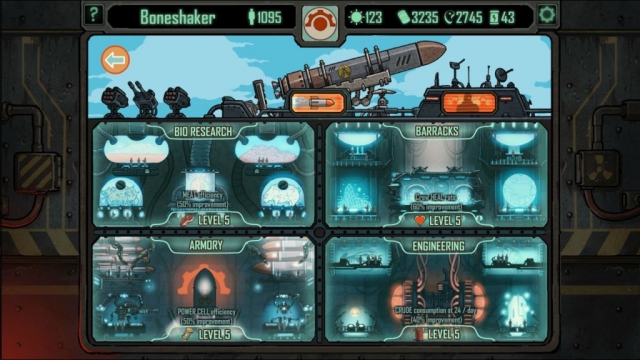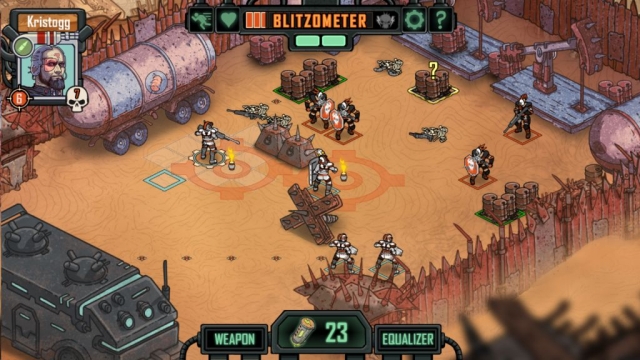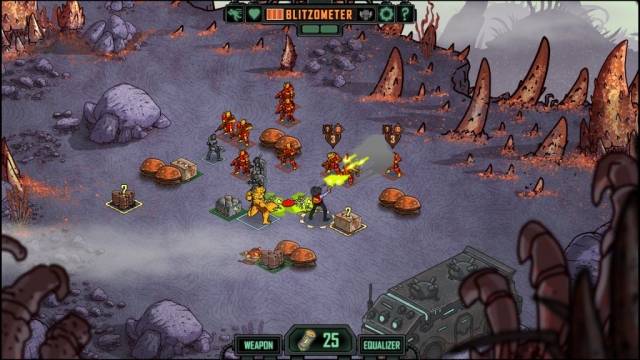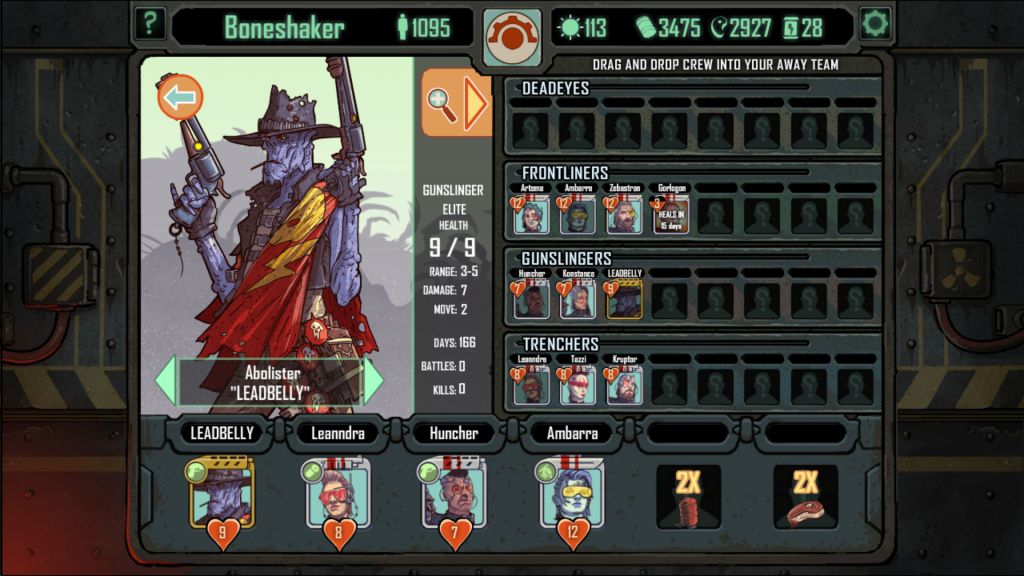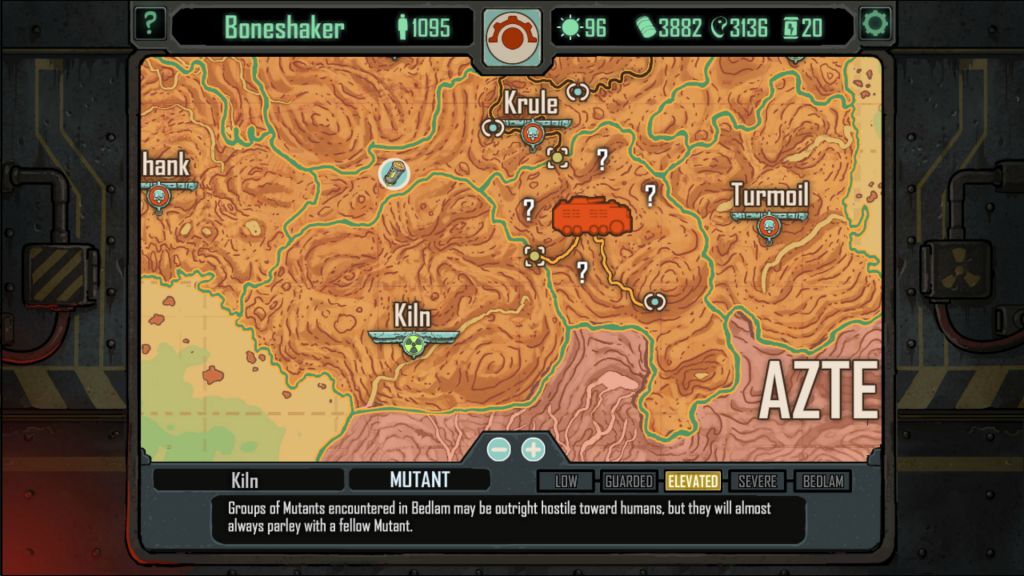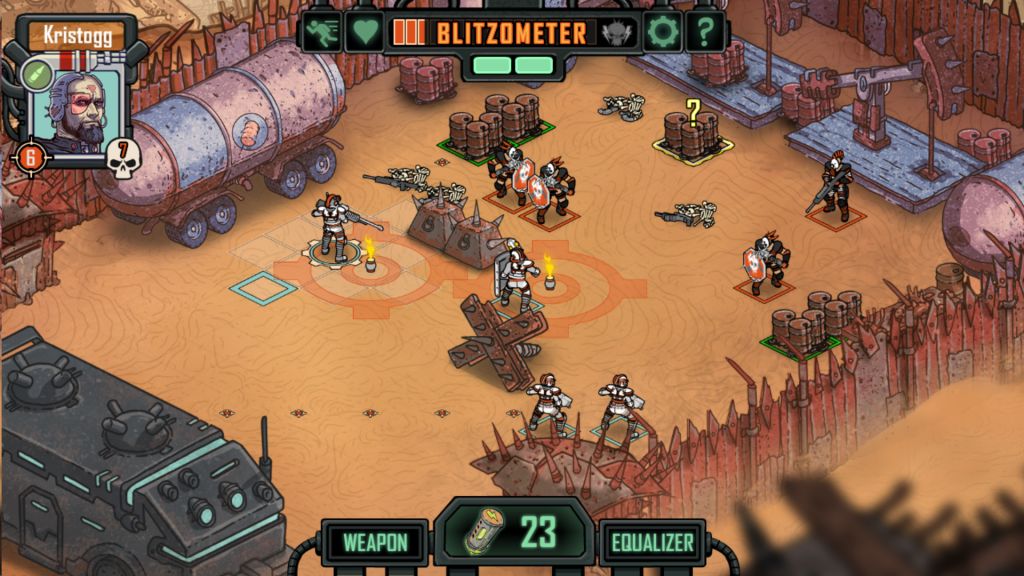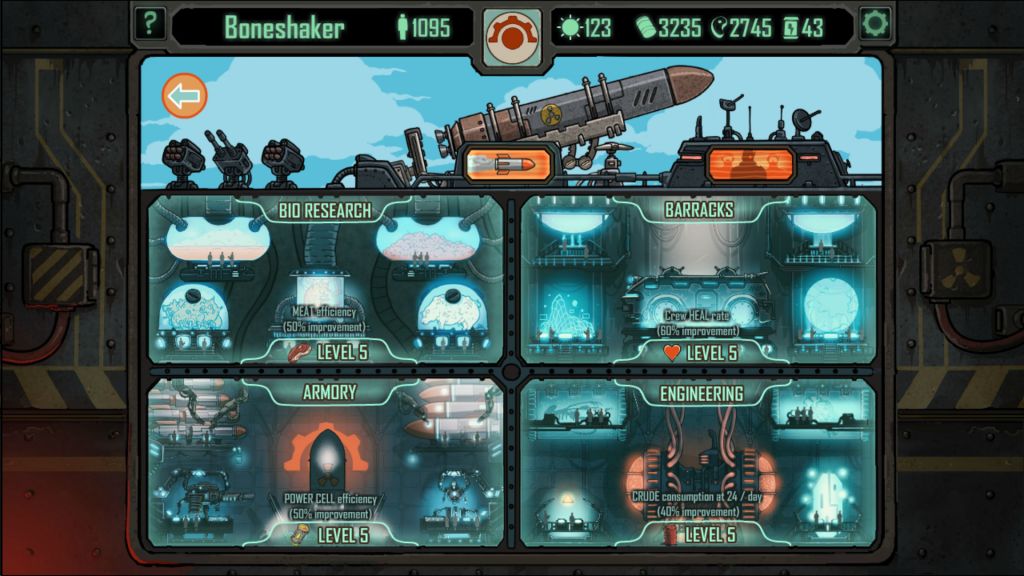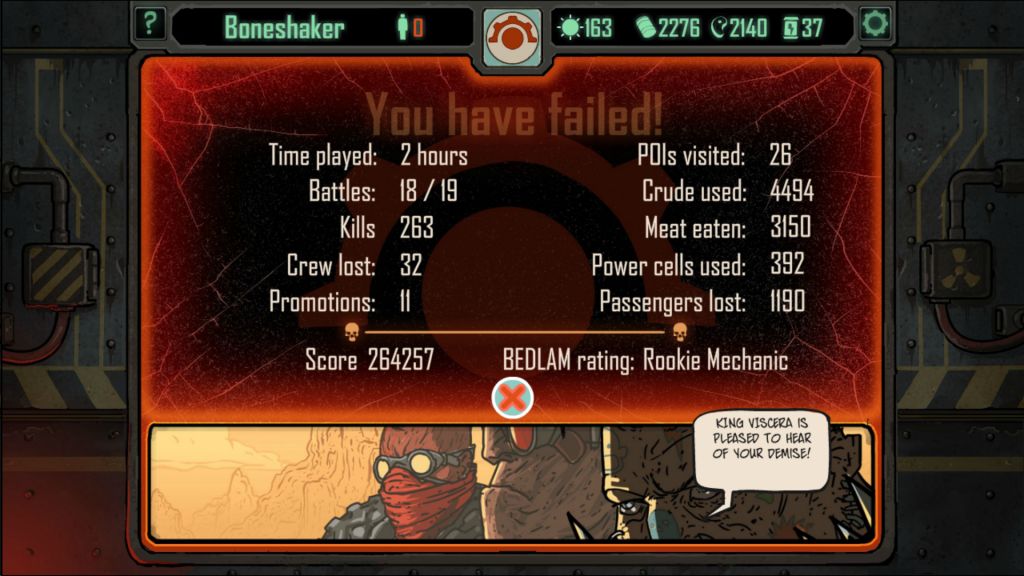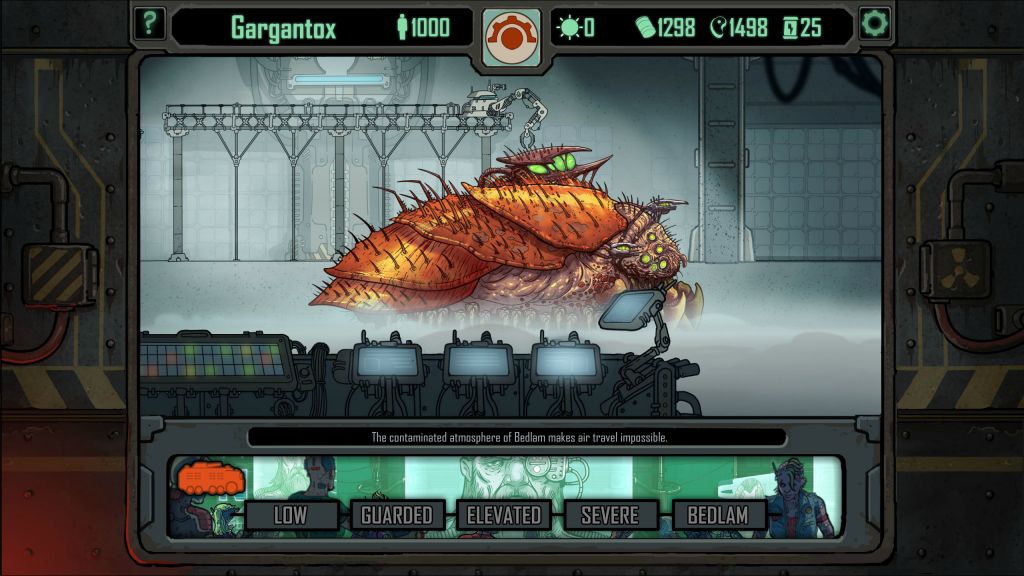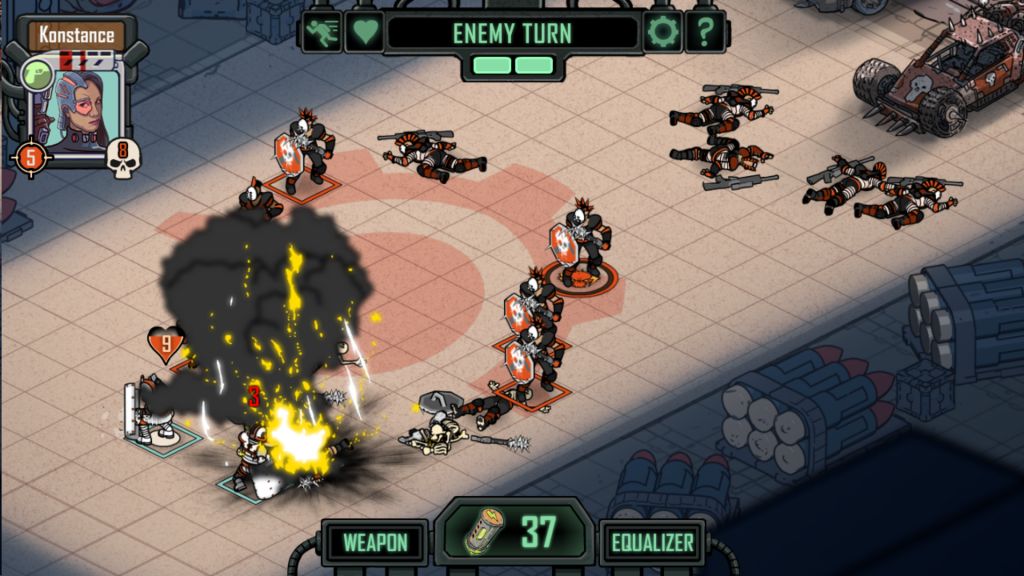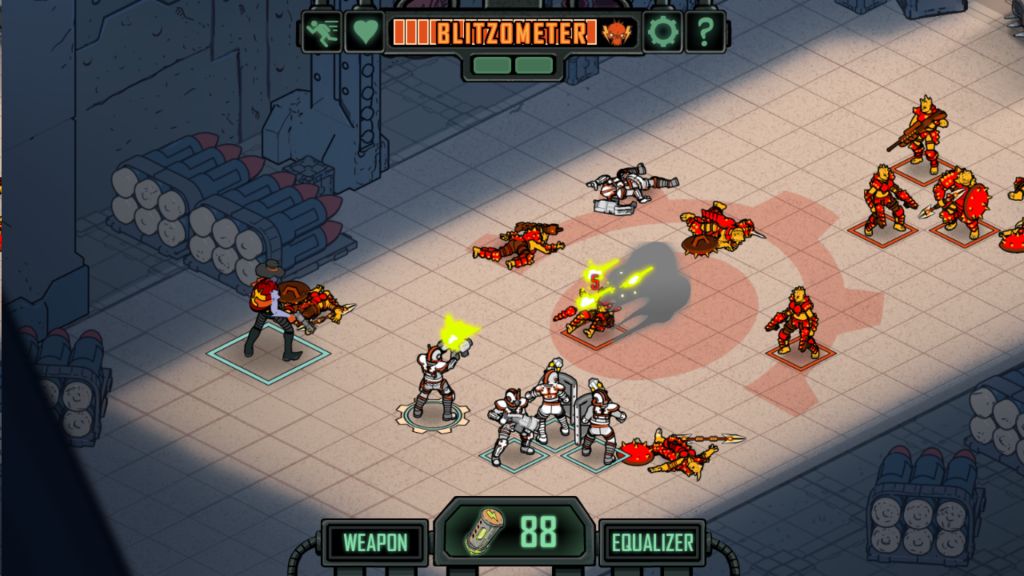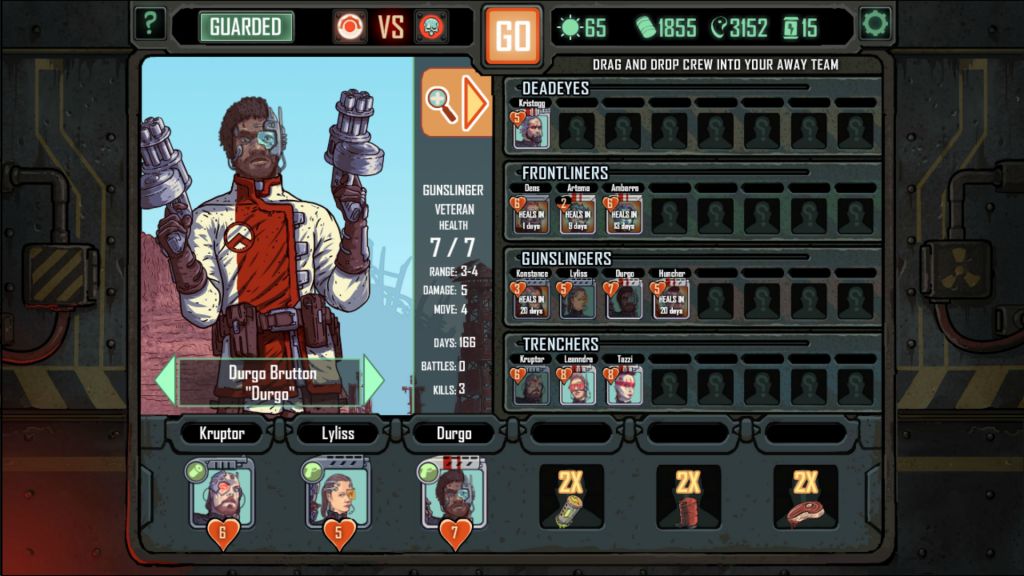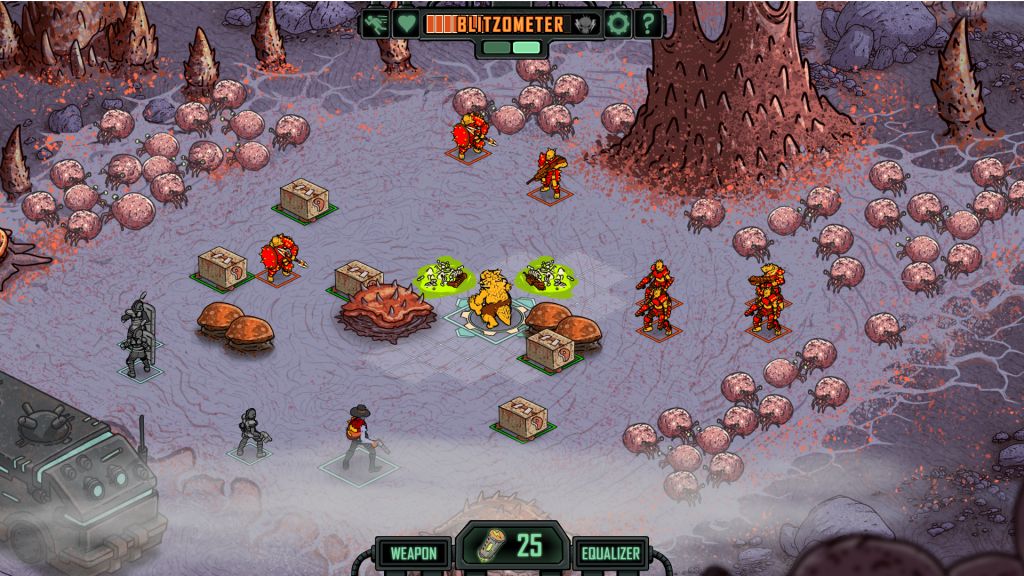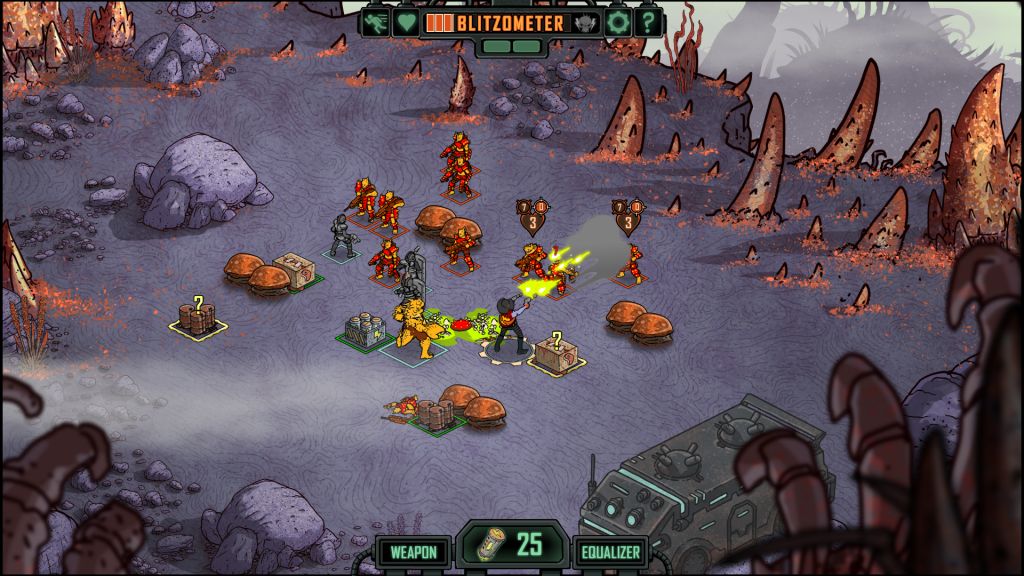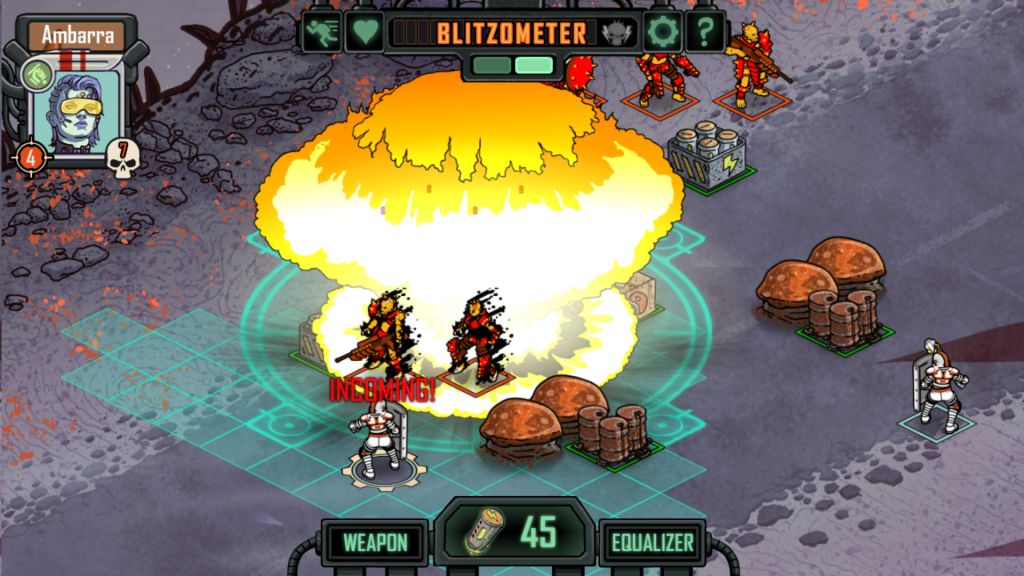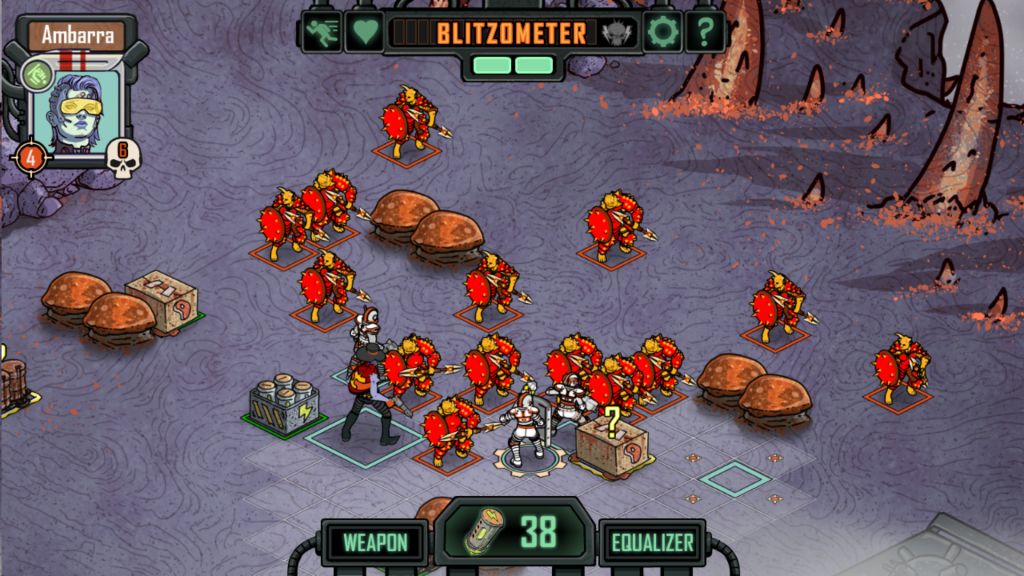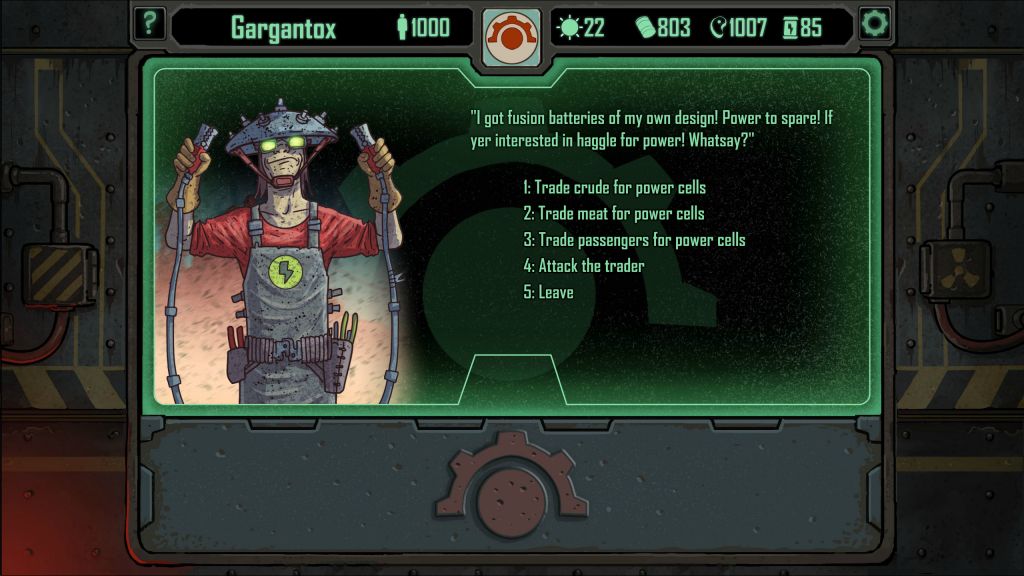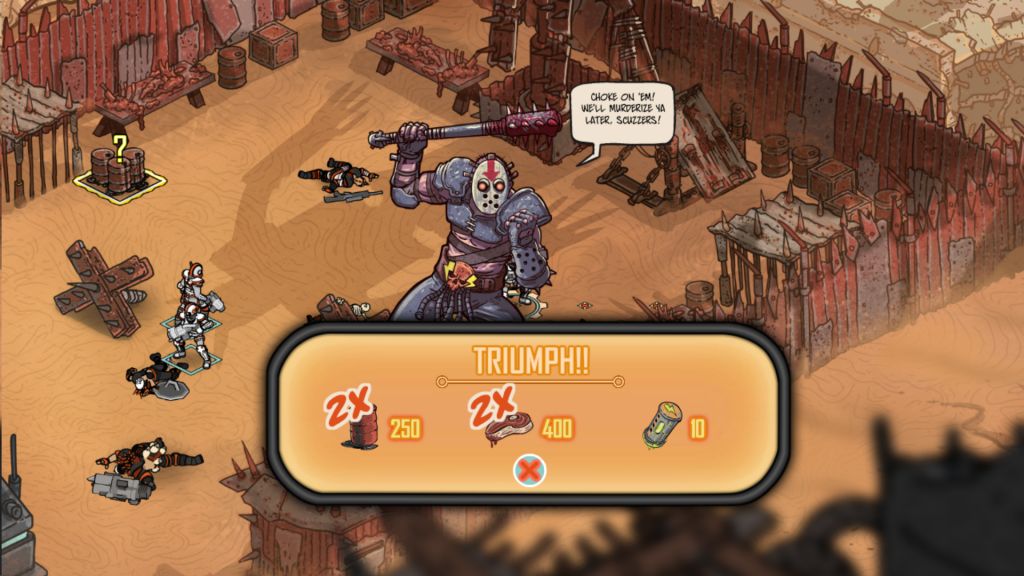Skyshine’s Bedlam
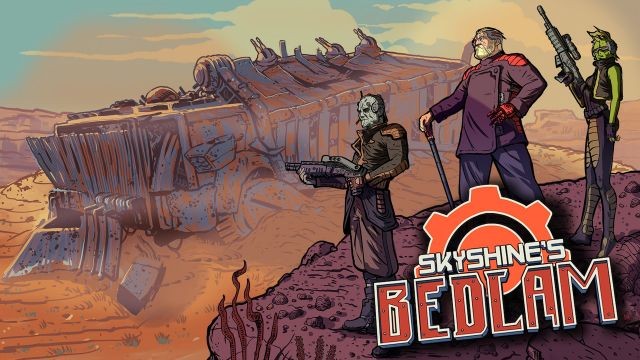
The Good: The Banner Saga, the sci-fi edition.
The Bad: Unit balance issues. Minimally interwoven story.
The Ugly: The Banner Saga, the sci-fi edition.
Perplexing, huh? Having the same facet of the game in both the Good and the Ugly columns. There’s a good reason for that. I’ll readily admit that I never understood The Banner Saga. It mixed a Faster Than Light level of random crapstorms together with a thin RPG plus a combat system that was akin to two big men hacking at each other with swords in a phone booth – let’s just say I found it too chaotic, too punishing in that a single random event could demolish an entire game of near-perfect tactical decisions. So I wasn’t really asking for a sci-fi version of The Banner Saga, hence the ugly column. But there are a lot of you, judging from the emails I received after The Banner Saga review, who said that the randomness and punishment was somehow their joy. The Banner Saga (and Faster Than Light, another game I eventually got frustrated with and quit) was not a game you won, but a game you played to get better at, try and get further along than you did the last time. They compared the combat system favorably to a bunch of Japanese games I’ve never heard of, and said that my lack of appreciation for the Japanese trailblazers left my palette unable to appreciate The Banner Saga. For those people, then, who were looking for more The Banner Saga with a slightly different spin on the combat system and a sci-fi flavor, for you, Skyshine’s Bedlam is a good thing.
Like The Banner Saga, Skyshine’s Bedlam is a game in two halves. One half has you manage the traveling caravan portion on a large map: pick a destination, watch a little animation of the convoy rolling along, burn resources (much more on this later), allocate upgrades (much more on this later also). The other half is turned based squad combat which takes place on a square grid which, for lack of a better metaphor, I’ll call a chess board. Unlike the Banner Saga, where the convoy portion was very limited in terms of strategy (there were few choices in your route, limited strategic choices to make along the way), the two halves are far more balanced this time around.
To start with, the convoy in this instance is a single vehicle – kind of a Mad Max meets Snowpiercer meets the RV from Stripes meets The Big Bus (bonus points for anyone who gets that last reference without having to look it up). You have your choice of several to start the game (much like the different ships you can start with in Faster Than Light) and they have different advantages and such. This vehicle burns fuel (a resource) and carries your passengers (a resource) and your soldiers (a resource) who eat meat (a resource) and is upgraded using power cells (a resource). So there are essentially five, count ‘em five, resources you have to manage in the game, and running out of any one of them will be the death of you. The combat portion is about getting resources, but the caravan portion is all about managing them. Power cells can be used to upgrade the vehicles internal systems (better gas mileage, better healing for your soldiers, somehow more efficient meat usage) and the vehicle weapon systems that can be used in combat, but you can’t use all the power cells because they’re also used to deploy the vehicle weapons as well as something called equalizers in combat. Each path you choose, whether directly on the path to your objective or one of many, many side trips which abound, costs you fuel and meat. There are occasional opportunities (merchants and such) where you can exchange one resource for another, and much like in FTL, you can find yourself in a game which is rich in one resource but stingy in others.
The combat portion of the game begins with you choosing up to six soldiers to bring into combat. Your soldiers come in four flavors – snipers, gunslingers, shotgun wielders, or melee fighters. The melee fighters do very little damage, but can absorb a lot. Snipers do a lot of damage, but are delicate. Shotgun wielders (the game calls them trenchers) and gunslingers reside somewhere the middle of that spectrum. Bringing fewer than the maximum number of soldiers bestows extra supplies at the end of the combat. Once you’ve selected your crew, you’re transported and placed on a chessboard -like battlefield. Unlike The Banner Saga, you don’t get to place your units, so with the computer doing it for you, you can end up in some pretty unfortunate layouts. Each side gets two moves per combat – only two moves – but you can use them however you like. Move a single unit repeatedly turn after turn, try and use the whole crew; it’s entirely up to you. Units only get experience (earn upgrades) for kills, so this can drive you to move your more veteran units, leaving the noobs out of the combat almost entirely, causing them to never get experience. You can end up in a situation where you have one or two super-advanced units, but if they are wounded or killed you can end up really screwed, especially late in the game when you’ll need a mixed crew with experience to take down some of the tougher enemies.
Two turns is very limiting. Moving a unit’s given move capability is a move. Taking a shot is a move. So a very common turn would be moving a single unit and taking a shot. An early combat turn might just be positioning two units. Units like snipers have a range they can shoot at, but beyond or inside of that range they can’t shoot at all (similarly gunslingers, and bricks can only do melee combat) so positioning can be critical. The battlefield is littered with places units can find cover (which provides some defense from shots) as well as extra resources (though picking them up costs a turn). During your turn you can also deploy a vehicle weapon (it doesn’t cost a move, but you have to have a move left to do so). These run a whole gamut from devastating nuclear bombs to gas, which makes enemy units attack each other, to an electrical discharge blast. They cost a lot of power cells, so use them sparingly. You can also use what the game calls equalizers – shields, healing, cloaking shields – also cost power cells, but not moves. And you go on like this, turn by turn, until someone runs out of soldiers, or someone retreats (retreating saves your soldiers, but gains you zero resources and costs you passengers who lose faith in your captaincy and abandon ship).
As I said way at the top of this thing, these two pieces mesh pretty well, but I can’t help but feel that there are balance issues. Soldiers are fragile. When injured, they take a long time to heal. There are few opportunities to get more of them. I lost more games to running out of soldiers than anything else, though avoiding combat isn’t an option because almost all opportunities to pick up the other resources involve combat. There are some minor boss battles, and if you beat the minor boss he joins your soldiers, but these battles can cost so much (other soldiers, power cells in the form of weapon deployments) that I’m not completely convinced they are worth the expense. Snipers, even advanced snipers, have such a short range of motion and a single range they can shoot at and so few hit points; I have yet to manage to get to the end of a game with a surviving sniper. Bricks do so little damage until they are veterans that they almost never get the kills they need to get experience to advance to veteran status and reach a point where they can do some damage. Catch 22. You can burn a lot of resources driving around looking for resources on side quests that provide no resources. Like I said, balance issues.
Given that the story is sort of tacked onto the game, I think it only fair that I sort of tack my discussion of it onto this review. In an unusual choice, the opening movie doesn’t play when you start the game – you have to go seek it out in the start menu and play it. Similarly, there is no playable tutorial, just a set of movies from the start menu. The story itself is the stuff of rather standard post apocalyptic tales, this one a Terminator-esque AI War. You reside in a small bastion of civilization known as Byzantium and decide to make a run through the lawless lands of Bedlam overrun by scavenger and mutants and rogue cyborgs and other badness to the fabled Aztec City. It sets the scenery, provides an interesting selection of enemy factions, but does little else.
So there you have it. My early assertion that Skyshine’s Bedlam is a lot like The Banner Saga with a sci-fi setting is pretty close. The story in Bedlam is far thinner, but they’ve tweaked the combat and added some resources to balance and I think they’ve ended up with a better game. I still find the FTL randomness of the universe – side missions can be free resources or a combat that goes terribly or nothing at all – too frustrating for my gaming tastes. But FTL and The Banner Saga both appealed to a lot of gamers, just not me precisely – so if you go into it looking for that style of gaming, you won’t be disappointed.
Reviewed By: Phil Soletsky
Publisher: Versus Evil
Rating: 80%
——————————————————————————–
This review is based on a digital copy of Skyshine’s Bedlam for the PC provided by Versus Evil.
 Game Over Online
Game Over Online